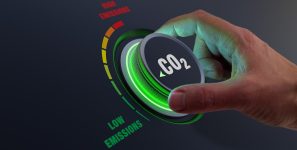The Global Solar Panel Market to Skyrocket on the Shift Towards Renewable Energy
IndexBox has just published a new report: ‘World – Solar Cells and Light-Emitting Diodes – Market Analysis, Forecast, Size, Trends and Insights’. Here is a summary of the report’s key findings.
The global solar panel market accelerates along with the unabated shift towards renewable energy. China, the leader in solar panel exports, will enjoy robust foreign demand while the domestic purchases may slow due to tariff subsidies cut. The U.S. experiences a surge in solar power generation, thanks to the increasing affordability of solar cells and robust suburban construction. The EU, Asia-Pacific, Mexico and Australia are also emerging as the most promising markets due to the swift adoption of solar generation capacities.
Key Trends and Insights
The global solar panel market is expected to skyrocket and exceed $130B by 2030, driven by the increasing shift towards renewable energy worldwide. In 2020, more than 80% of all the world’s newly commissioned electric power was from renewable sources, accounting for near 260 GW of the new capacity. Of this amount, almost a half comes from solar generation. The electricity production from solar generators, according to a forecast by the International Energy Agency, will increase 4.5 times over by 2030, which will be the primary stimulus for the growth of the solar panel market.
The Chinese solar panel industry will continue to thrive amid soaring global demand, despite removing tariff subsidies for new domestic solar energy projects. In China, the world’s leading renewable energy producer, the new solar power capacity grew by 49 GW, which accounts for 36% of the total renewable capacity. Starting from 2021, electricity generated by new solar capacities is to be sold either at local coal-fired power prices or at market prices. This may hamper the domestic solar panel market expansion, but Chinese manufacturers may offset this by rising exports because they dominate global solar panel supplies.
The increased availability of solar panels in the U.S. enables to accelerate the market growth. In 2020, the U.S. commissioned 29 GW of new renewable energy sources, up 80% from a year earlier, of which 15 GW came from solar power. Over the past decade, the cost of solar systems in the United States has dropped by 70%, and the cost of solar-generated electricity has become attractive against alternative sources. In 2020, the base overnight cost of solar photovoltaic energy ranged from $1.248 to $1.612 per kW, which is significantly lower than the base overnight cost of conventional hydropower electricity of $2.769 per kW or geothermal one of $2.772 per kW.
The deployment of distributed solar photovoltaic systems in homes as well as for commercial and industrial buildings appears as a budding market segment worldwide. In the U.S., it is expected to grow rapidly on the backdrop of a boom in suburban single-family construction, highlighting a bright opportunity for investors.
Vietnam is emerging as a promising market, having solar energy capacity skyrocketed over the last two years. To a lesser extent, this is also relevant for the EU, especially Germany, Spain, the Netherlands and Belgium. Australia, Mexico, the UAE and Chile also feature amongst the leaders of the solar energy adoption race. All these markets are to be in the particular focus of global solar energy solution providers who seek new opportunities.
Imports
Global imports of solar cells and light-emitting diodes stood at $54.2B (IndexBox estimates) in 2020. The most prominent rate of growth was recorded in 2014 when imports increased by 6.8% against the previous year. Over the period under review, global imports hit record highs at $55.4B in 2015; however, from 2016 to 2020, imports stood at a somewhat lower figure.
The U.S. ($10.5B) constitutes the largest market for imported solar cells and light-emitting diodes worldwide, comprising 19% of global imports. The second position in the ranking was occupied by Germany ($3.1B), with a 5.6% share of global imports. It was followed by Mexico, with a 2.2% share.
From 2007 to 2020, the average annual growth rate of value in the U.S. totaled +15.1%. The remaining importing countries recorded the following average annual rates of imports growth: Germany (-3.5% per year) and Mexico (+7.9% per year).
Exports
In 2020, solar cells and light-emitting diodes exports totaled $57.5B (IndexBox estimates).
China ($23.8B) remains the largest solar cells and light-emitting diodes supplier worldwide, comprising 41% of global exports. The second position in the ranking was occupied by Malaysia ($5.6B), with a 9.7% share of global exports. It was followed by Japan, with a 6% share.
From 2007 to 2020, the average annual rate of growth in terms of value in China stood at +12.3%. The remaining exporting countries recorded the following average annual rates of exports growth: Malaysia (+14.6% per year) and Japan (-3.5% per year).
Source: IndexBox Platform





Leave a Reply